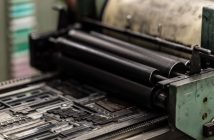There are a lot of options out there for putting together a retro computer. There’s a variety of different platforms to choose from, after all the early computing landscape was dominated by far more than the IBM PC compatibles and the Apple Mac. It can be a confusing place to be if you don’t have a connection to a particular platform.
In this article, I’m going to offer some generic advice for picking hardware for the IBM PC Compatible platform. While I would like to cover more platforms, that could be a little much for a single article. By the time the 1990s rolled around, the IBM PC compatibles were becoming dominant so it seems an appropriate place to start.
This article will be divided into sections based on particular common use cases. Let’s dive in and see what we can come up with.
Business Applications
This is a fairly low target to hit. Your typical business applications even back in these days could run on fairly modest hardware and still give you good results.
A useful starting point would a machine based around a 386 CPU. These are two different variants of the 386 that were in common use, the 386DX and the 386SX. The 386DX is the “full” 386 experience, whereas the 386SX was a budget chip that had only a 16-bit data bus. This means the 386SX is basically a 286 with better memory management, which can limit performance. Either will be fine for most business applications, but these performance limitations can be a problem if you want to run Windows 3.x.
Aim for at least 4 megabytes of RAM as a starting point. This should be enough to run a single application at a time, even under Windows. If you want to run multiple applications at the same time, 8 megabytes of RAM might be a better option. 16 megabytes of RAM might be useful if you want to run Windows 95, though Windows 3.1 might be a better option for 386-based PC’s due to their lower performance.
A hard drive of 250 megabytes can give you enough space for a decent range of business application and still give you plenty of free space.
Any SVGA card with at least 512kb video RAM will be fine of resolutions of up to 800×600, which will often be enough for most business applications and can be adapted via various adapters for modern monitors if needed.
MS-DOS Gaming
MS-DOS gaming really came of age with the 486 CPU. Prior to Windows 95, a PC with a 486DX2/66 with 8 megabytes of RAM would be fine for most gaming under MS-DOS and indeed was a common configuration.
The 486 machines brought us the VESA local bus, which allowed for higher performance graphics cards. If you’re able to get hold a machine with a VESA graphics cards, this is definitely worth considering as these cards often give better performance than an ISA based card and can be more often found as part of an existing PC. Tseng and Cirrus Logic cards tended to be higher performing cards back in the day, where Trident was a lower-performance and lower-cost option.
You’d want to consider at least a 420mb hard drive as some later games could take up a decent chunk of space. Bear in mind that older 486 motherboards were limited to hard drives of 500mb without some additional trickery.
If you’re looking to add sound, the Sound Blaster 16 cards were the most compatible with games and most flexible options. The AdLib Gold cards are another popular option, but often you will only get music with these cards and don’t always get sound effects.
Windows 95 Gaming
Gaming under Windows did not really take off in a big way until Windows 95 became standard. Older versions of Windows were not designed with gaming in mind so prior to Windows 95 most gaming happened under MS-DOS.
For Windows 95 gaming, a Pentium 1 class CPU would be a good minimum. A 166 or 200mhz Pentium CPU would cover a lot of earlier gaming. Be careful of non-Intel CPU’s. They can sometimes perform well, but they are also a bit of a confusing mess during this period. Unless you know what you’re getting, it’s often better to stick to Intel.
You’d want at least 16 megabytes of RAM for Windows 95, with 32 megabytes being a better option. Windows 95 realistically does not give much change out of 8 megabytes, so 16 megabytes can sometimes be a bit of a squeeze. A 2 gigabyte hard drive is also ideal for these systems, and a Sound Blaster sound card will give you most compatibility if you also want to ply DOS games.
The ATI Mach64, S3 Trio, S3 Virge or 3DFX graphics cards were all fairly common video cards that provide acceptable gaming performance. If you get any of these cards, you should get good results.
Conclusion
While I can’t possibly cover every possible hardware and software combination, this article should give you at least some targets to work towards for putting together a retro IBM Compatible PC. This should help get you started.
Of course, if you’re seeking additional pointers, you can join our Discord server and ask. We’ll happily give you some more pointers if you so require.



